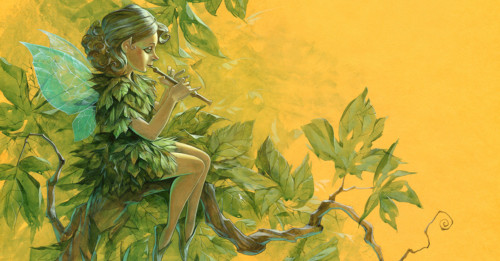Absinthe Essential Info
- Color: Can be clear, more often emerald green or pale yellow (feuille morte, or “dead leaf”) color
- Region: Can be produced anywhere
- ABV: 60 to 70% ABV
- Aged: Not required, though more producers are experimenting with it
- Made from: Anise, fennel, wormwood
- Commercial Examples: Oak Aged Valkyria, Muse Verte, Pernod Absinthe, St. George Absinthe Verte, Pacifique Absinthe Verte Superiere
- Popular Cocktails: Corpse Reviver No.2, Death in the Afternoon, Absinthe Frappe
Commonly known as “The Green Fairy” for its supposed ability to make you hallucinate, the truth is that anything freaky that happens to you after drinking absinthe has everything to do with its high alcohol content—and whatever choices you’re making in your life right now.
So while it might have a bit of a crazy reputation, absinthe is actually just a potently flavored liquor. Like ouzo, or even gin, it starts with a fairly neutral alcohol or wine base which is then macerated with flavorings, especially anise, fennel, and wormwood. (The wormwood is famously left out in pastis, an anise-flavored liqueur made famous by Pernod Ricard—who, it should be noted, relaunched their original Pernod Absinthe in 2013.) The wormwood was originally blamed for causing those hallucinations (thujone in wormwood, specifically), but science has pretty well concluded that the concept has no basis, no matter how inspired a bunch of artists and writers may have felt after drinking it.
However that doesn’t mean you should just knock Absinthe back willy nilly. Even after bans were lifted, absinthe production hasn’t been universally regulated, so you’ll have to pay attention the laws (or lack thereof) wherever you’re buying. For instance, in the U.S., since 2007, absinthe made with wormwood can be legally distilled and sold, but must be “thujone-free.” This actually means absinthe sold here can only contain trace amounts of thujone, which almost all authentically-produced absinthe already does.
Likely most of us aren’t going for hallucination when we buy spirits anyway. The real thing to look out for with absinthe is the flavor—it packs punch, like liquid Good n’ Plenty with devilish kick. None of the flavorings are shy, and if your absinthe is well-made (not a green-tinted, artificially flavored knock-off), you should get clean, spicy-sweet notes licorice against the heat of that tremendously high ABV. In fact, given the alcohol content, it’s common to take absinthe with a bit of water, which creates the same milky “louche” effect you’ll get from adding water to Ouzo (due to the presence of anise oil). Our best advice when buying absinthe is, as always, do a bit of research, and don’t worry about lighting any sugar cubes on fire, just add a bit of water and sip slowly.
